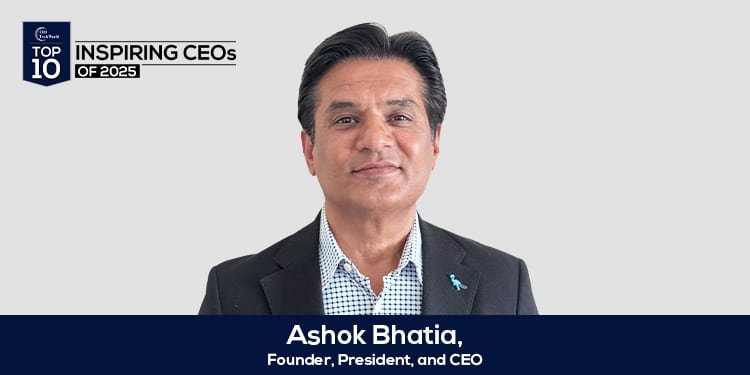My typical day, as I assume is true for most, consists of logging into multiple websites and apps that I need for everything from work, banking, healthcare, investment, digital media, social apps, dining, recreation, shopping, and much, much more. To access each site, I have had to create an individual account with my personal information, along with a user ID and password, and most often, a multifactor authentication mechanism that relies heavily on my mobile device. There are only so many passwords I can remember and password fatigue is all too real, so I choose from a small set of known passwords that I can remember and even a password manager that helps me track the hundreds of accounts I have had to create over the years for any and all my online needs. And nearly every week, there is news about a breach of one or more of the sites I am registered with, where my personal and/or financial data is potentially stolen by bad actors!
It’s honestly exhausting!
The challenge for businesses is just as significant. Protecting user data has become a costly and complex task, often requiring layers of security systems to defend against hacks. One misstep can lead to a serious breach, resulting in financial penalties and reputational damage. The current approach to identity and data protection is not only unsustainable but also ineffective.
ENTER BLOCKCHAIN
This is where I have always seen the most impactful potential for Blockchain. Far removed from the cacophony of Crypto-Bro swagger, lies the quiet potential of identity security and streamlined identity verification in blockchain. A system that seems ideally designed to address the security concerns around personal data and identity protection. A system that, if approached correctly, can safeguard users and corporations from data breaches, while potentially saving money on overlapping security safeguards currently in place to protect critical user data.
Why is blockchain the best solution for identity management? Blockchain’s core principles—decentralization, transparency, and immutability—make it an ideal framework for secure identity management. In this system, each user generates a unique digital signature, which acts as their identity on the blockchain. This signature is encrypted and stored in a decentralized network, making it extremely difficult for bad actors to manipulate or steal. Blockchain’s decentralized architecture ensures that no single entity controls the data. Moreover, any change to the data requires the approval of multiple nodes in the network, adding a further layer of security. A decentralized identity is a secure identity.
What if there’s a change that is approved by the blockchain? That’s where transparency comes in. Unlike traditional systems where only the company controlling the data has visibility into changes, blockchain gives users full transparency. You choose exactly what data is accessed, modified, or shared, putting control back in your hands.
But how can you control changes to your identity on the blockchain? This is where the immutability of blockchain comes into play. Once a transaction or record is added to the blockchain, it cannot be changed without the consensus of the network. If a hacker were to compromise a single node and attempt to alter your data, that change would be rejected by the majority of nodes. This characteristic ensures that your data remains safe, trustworthy, and unaltered unless explicitly authorized. Now, this data is safe.
DECENTRALIZED IDENTITY: SECURE AND IN CONTROL
Decentralized identity on blockchain allows individuals to have full control over their personal data. Instead of relying on centralized platforms to manage your credentials, you own and manage your digital identity directly. You decide who gets access to your information and under what conditions.
In this model, personal data is stored in an encrypted identity wallet, accessible only to you. When you need to share your identity with a third party, such as a bank or healthcare provider, blockchain ensures that only the necessary data is shared. For instance, when verifying your age, the system can confirm you are over 18 without revealing your birthdate or other personal details.
This selective disclosure of data protects users from unnecessary exposure to sensitive information. The user controls what is shared and with whom, greatly reducing the risks of identity theft or misuse.
So that’s my short thesis. Blockchain is secure, transparent, and immutable. This means your identity and data are encrypted, secure, unchangeable, and within your control. I see a future where all critical data is on the blockchain: personal, financial, medical, legal—you name it. As blockchain technology continues to evolve, its application in identity management could redefine digital security, offering a future where your identity is not only secure but truly in your control.
Read more:
IQAX: Paperless Bill of Lading Pioneer
AI as a Supercharged Assistant: Unlocking the Power of Technology with a Simple Mental Model

I am the Chief of Operations at Hekima Business Solutions, and an experienced operations and technology executive focused on advancing capabilities and performance. I’m a focused, driven leader who builds strong, ethical teams and aligns technology initiatives with organizational priorities. I’ve been credited with driving improvements in operational efficiency, risk management, cloud adoption, DevSecOps, innovation, enterprise architecture, identity management, governance, cybersecurity, and modernization across industries and government agencies. As a fiscally-minded global program leader, I help executives make informed decisions with both domestic and international impact.








